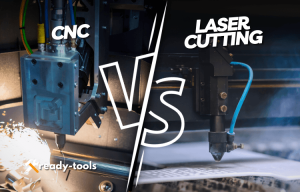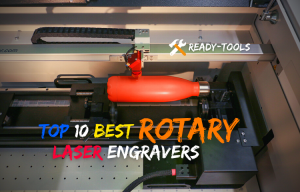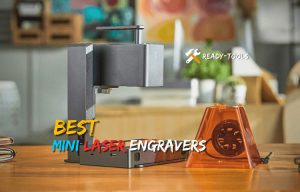Knives and blades feel more personal when you have your name or logo engraved on them. The practice has been around for more than a thousand years and is still practiced today. Fortunately, engraving a knife blade is not as complex and time-consuming as it used to be in ancient times.
Thanks to the modern laser engravers, it only takes a couple of minutes to imprint your design without any physical effort. This article will discuss the basic concepts of laser engraving blades and how to laser engrave knife. So, without any further delay, let’s get started:
Different Ways to Engrave on Knife Blades:
Blades are usually made from metal which is a malleable material. Therefore, it is very easy to engrave a blade or a knife if you have the right equipment. There are six different ways of laser engraving knife blades. These are:
- Fiber laser annealing
- Fiber laser etching
- Laser marking with ceramic compound
- Fiber laser deep engraving
- Chemical etching
- Electro-etching (Electrolytic etching)
1. Fiber Laser Annealing:
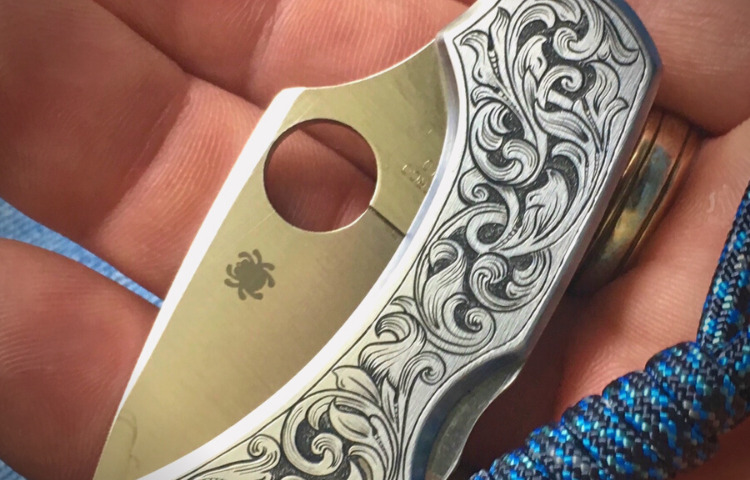
Fiber laser annealing is the most commonly used method for color engraving blades without causing any damage to the material. As you know, blades are made from a single piece of metal. So, typical engraving vaporizes its topmost layer, reducing the material’s strength.
On the contrary, laser annealing produces the required results by hitting the surface with a low-powered layer to oxidize the surface and produce the engraving in the required color.
2. Fiber Laser Etching:
Laser etching is the second common method for imprinting on metal. Laser-etched knives are readily available from the market, and you can even make one yourself with a fiber laser.
The etching process is very similar to engraving except for the groove depth. However, laser etching can only be used for designing 2D blades as the depth doesn’t allow for a three-dimensional format.
3. Laser Marking with Ceramic Compound:
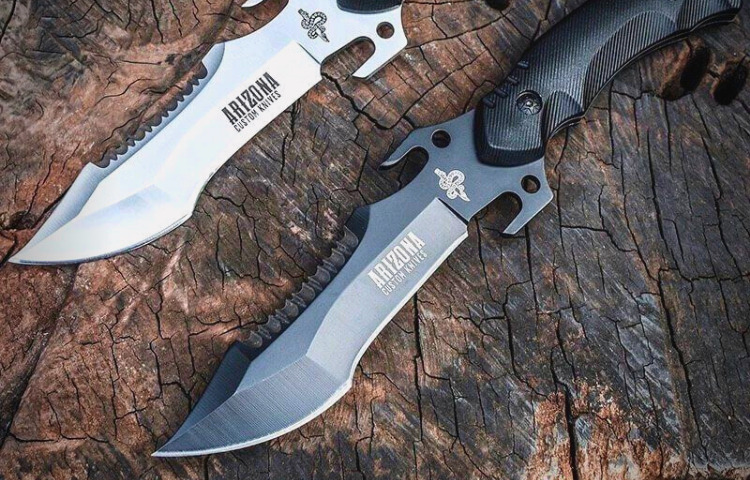
Ceramic compounds are easily available from the market. The compound basically reduces the metal’s melting point so that you can even use a 20W CO2 laser for the project. In this method, the ceramic compound is applied to the blade and hit with a low-power CO2 laser.
The laser quickly melts the compound and the blade to produce permanent markings. You can even produce variations in the design by using a different compound. For example, the Silvermark ceramic knife requires a special compound and the perfect laser settings.
4. Fiber Laser Deep Engraving:
The standard process of imprinting logos on blades is fiber laser deep engraving. In this method, a high-power laser is applied on the blade’s surface to vaporize the top layer and form deep grooves. You can even make 3D engraving on the blade if you use this method. However, the material’s strength is slightly reduced in the process.
5. Chemical Etching:
One good metal property is that it can be easily etched with a strong chemical reagent. In this process, the chemical is applied to the blade’s surface. You can preheat the blade or use a laser to heat the material afterward slightly.
As a result, the chemical etches the surface of the blade and forms shallow grooves. You can use this method to engrave the blade without damaging its strength and properties successfully.
6. Electro-Etching:
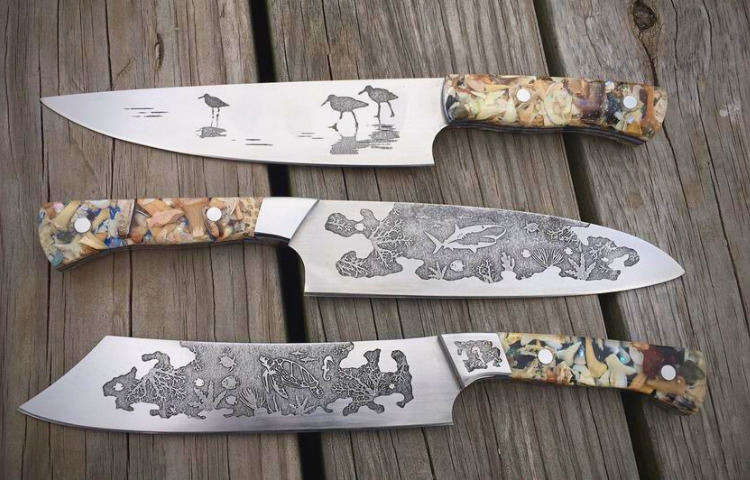
Electro-etching is the same process as the electrolysis of metals. However, you need to cover the blade with a tape or sheet to expose only the required area to the electrical current. You can cut the masking sheet manually or use the laser engraver for complex designs.
Cover the blade with a masking sheet for electro-etching and submerge it in the salt-water solution. Electrical current is applied to the blade to permanently deposit the material on your blade in the required shape.
How to Laser Engrave Knife: Step-by-Step Guide
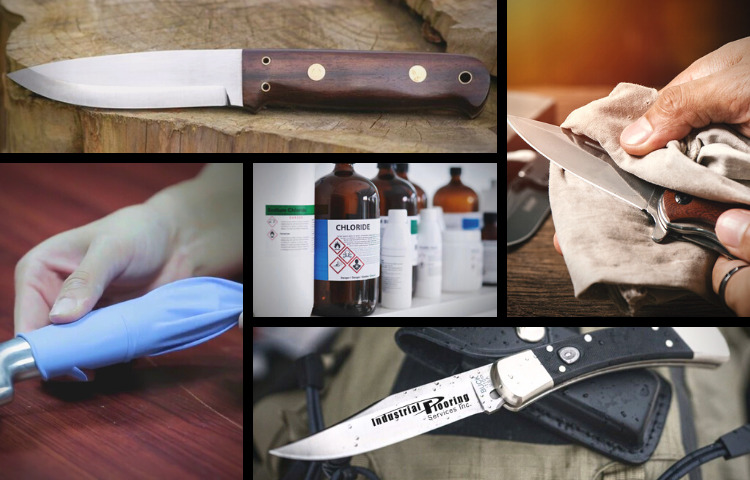
- Prepare the blade using suitable methods:
- Remove any plastic that covers the blade.
- Make sure that the knife is fully finished.
- Slightly brush the knife with a sandblaster or a shiner tool.
- Protect the handle:
- The handle is the protecting covering at one end of the blade.
- The knife engraving patterns may affect the handle.
- Remove the handle from the blade or cover it with a thick vinyl to protect it from the laser.
- Clean the blade:
- Metal blades are quick to catch dust and fumes.
- These fumes may be unnoticeable to the naked eye.
- The impurities can impact the laser engraving, and the results may not be perfect.
- Clean the blade with rubbing alcohol or acetone to remove even the microscopic impurities.
- Apply the engraving chemical:
- A laser engraving spray can make the task further easy.
- The laser spray makes it easier for the laser to engrave on even the hard metals.
- Moreover, the spray penetrates the blade to form permanent engraving.
- Let the engraving begin:
- Place the prepared blade in the work area of your laser engraver.
- Import the text, logo, or design in the laser software.
- Adjust the laser settings according to the material and the complexity of the design.
- Moreover, the laser power also depends on the method of engraving that you choose.
- Press start or print to begin laser engraving the blade.
- Detailing:
- When the engraving is finished, carefully examine the engraving to check for any flaws.
- Remove any excess molt from the blade for perfection.
- You can even use paint to keep the engraving safe from rust and other environmental factors.
Engraving Descriptions:
Stainless Steel Bare Metal:
Laser on bare stainless steel metal changes the carbon composition on the molecular level. As a result, the surface of the metal becomes black and oxidized. This discoloring is permanent and lasts for as long as the engraving and the blade itself.
Coated Stainless Steel:
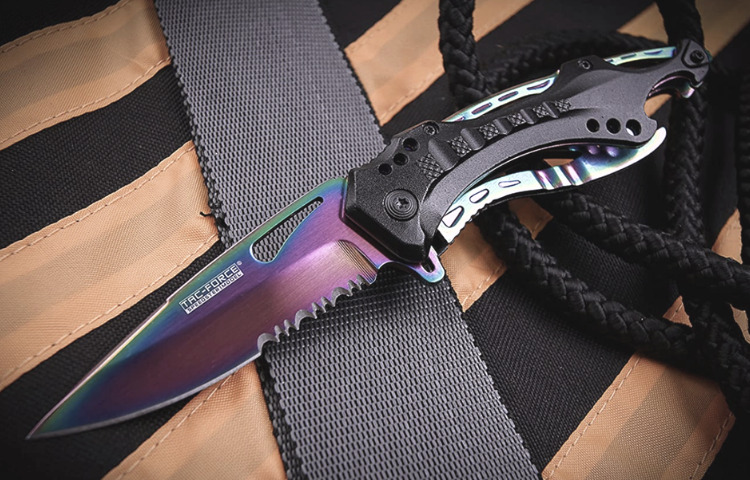
Modern knives and blades are coated with special black paint. This paint prevents the knife from rusting and oxidization. Fortunately, the coated blades can also be engraved with a laser. However, the process vaporizes the coating rather than the steel, and the engraving has a silver color.
Engraving Anodized Aluminum:
Anodized aluminum is used for making the handles of knives and blades. You can use a CO2 laser machine to engrave such materials. The engraving produces white color on the surface. Moreover, the results are permanent and resistant to rust and environmental hazards.
Also Read: Best Laser Engravers for Tumblers
Frequently Asked Questions:
Which Cricut blade for engraving?
Cricut machine is used for engraving on several soft materials. Usually, the Cricut engraving is not as durable as laser engraving. In some cases, you can use the tooling leather settings that are predefined in the software to engrave blades.
What blade do I use from Cricut for engraving?
Cricut is a low-power engraving machine, so it can only work on soft materials. You can use your Cricut for engraving on stainless steel blades and anodized aluminum blades. It is recommended to use a laser engraving chemical for the process.
How thick of metal can the Cricut maker engrave?
You can use a laser engraving machine to engrave stainless steel blades up to 2.4mm thickness. The softer metals like aluminum sheets of up to 4mm thickness can be easily engraved with the same laser engraving machine.
Conclusion:
Engraving blades and swords have been a common practice used since ancient times. However, modern technology makes it considerably easy to laser engrave knife blades accurately.
Still, there are some properties that you need to keep in mind before starting the project. This article discussed all those details and different knife engraving ideas to help you out.

